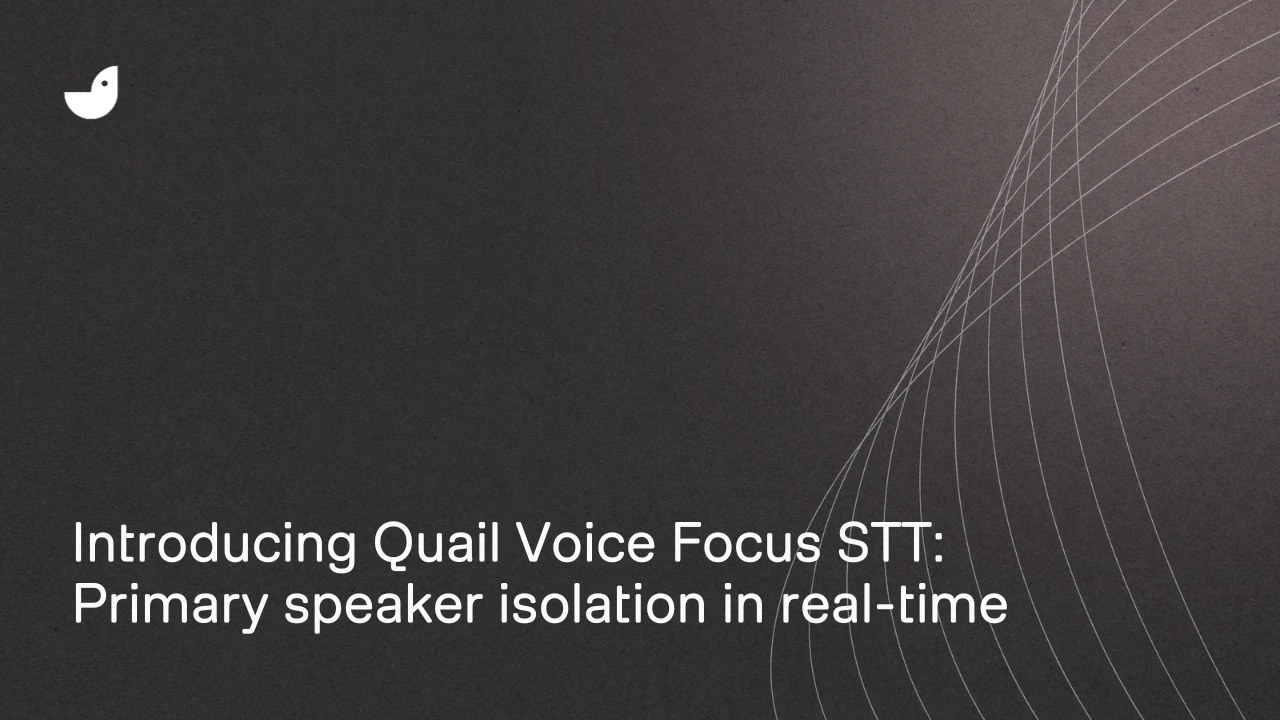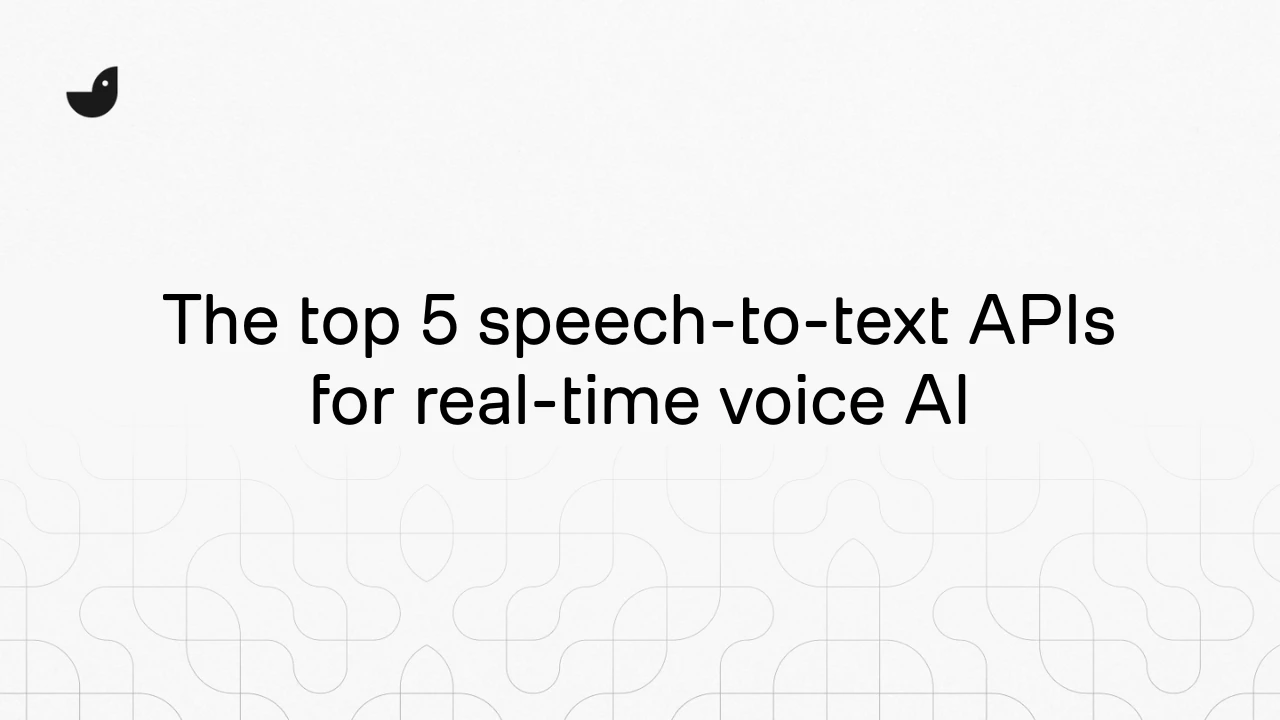Voice AI is a booming industry. In 2024, the global Voice AI market reached $5.4 billion, up 25% from 2023, and experts are expecting this trend to continue, with some predicting that the market will reach $8.7 billion by 2026, with a 34.8% compound annual growth rate (CAGR).
The basics: Foundational Voice AI terms
Artificial Intelligence (AI)
The broad field of computer science focused on building systems that can perform tasks normally requiring human intelligence, such as reasoning, learning, and decision-making.
Conversational Intelligence
The use of AI technologies to enable machines to understand, interpret, and respond to human language in ways that feel natural and context-aware.
Machine Learning (ML)
A subset of AI where systems learn patterns from data rather than being explicitly programmed. Core to how voice AI models improve accuracy over time.
Natural Language Processing (NLP)
The branch of AI that helps machines understand, interpret, and generate human language. NLP powers everything from chatbots to transcription services.
Natural Language Understanding (NLU)
A subfield of NLP focused on interpreting the meaning and intent behind user input. Crucial for enabling conversational AI.
Automatic Speech Recognition (ASR)
The process of converting spoken words into written text. ASR is at the heart of voice assistants, dictation apps, and call transcription.
Voice Recognition
Often used interchangeably with speech recognition, but strictly refers to identifying who is speaking rather than what is being said. Used in authentication and personalization.
Speech-to-Text (STT)
The function of transcribing spoken words into text. Often used interchangeably with ASR.
Text-to-Speech (TTS)
The reverse of ASR and STT: turning written text into natural-sounding spoken output. Used in smart speakers, accessibility tools, and AI-powered audio content.
Speech-to-Speech Translation
Directly converting spoken input in one language to spoken output in another, without requiring intermediate text steps.
Voice User Interface (VUI)
The interface that allows users to interact with devices or applications through voice commands. Think of it as the “UI” for voice-first interactions.
Speech Synthesis
The process of artificially generating human-like speech, often through TTS systems. Modern systems use deep learning to make synthetic voices sound natural.
The industry: Core Voice AI technologies
Conversational AI
AI systems that simulate human-like conversations through speech or text. Includes chatbots, virtual assistants, and customer service tools.
Speech Recognition
The ability of machines to process spoken input, often used interchangeably with ASR, which stands for Automatic Speech Recognition.
Voice Biometrics
Technology that authenticates individuals based on unique vocal characteristics, adding security layers in banking and enterprise systems.
Wake Word (or Hotword) Detection
The specific word or phrase (like “Hey Siri” or “Alexa”) that activates a voice assistant.
Intent Recognition
The AI process of identifying what a user wants to achieve from their spoken command: for example, knowing that “What’s the weather?” is a request for a forecast.
Dialogue Systems or Dialogue Management
The system that manages how a conversation flows between user and AI, ensuring responses feel natural and coherent.
AI Noise Cancellation / AI Noise Suppression / AI Noise Removal
Overlapping terms that describe filtering out background sounds (like traffic, typing, or crowd noise) from speech input in real time, making conversations clearer.
The use cases: Voice AI solutions
Voice Assistants
AI-powered helpers such as Alexa, Google Assistant, and Siri that perform tasks, answer questions, and control devices.
Smart Speakers
Devices like Amazon Echo or Google Nest that bring voice AI into homes, enabling everything from music playback to smart home automation.
Voice Search
Searching the internet using speech instead of typing.
Voice Commerce (V-Commerce)
Shopping via voice commands, like when someone orders groceries through Alexa.
Call Center AI / Interactive Voice Response (IVR)
AI-driven interactive voice response systems that handle customer queries, reduce wait times, and improve efficiency.
AI Accent Localization
The ability of AI to adapt speech recognition or synthesis to regional accents and dialects, improving accessibility and accuracy across geographies.
AI Live Assist
Real-time AI support for human agents in customer service. Provides prompts, recommendations, or knowledge base links while the call is happening.
AI Voice Conversion
Transforming one person’s voice into another’s while retaining speech content. Used in accessibility, entertainment, and privacy-protection applications.
The specifics: Technical Voice AI terms
Neural Networks in Voice AI
The deep learning models (inspired by the human brain) that enable accurate speech recognition and synthesis.
Large Language Models (LLMs)
Advanced AI systems trained on massive text datasets that can generate and understand natural language with high accuracy.
End-to-End Speech Models
Simplified architectures that learn directly from raw audio to output text, improving performance and reducing complexity.
Latency
The delay between a spoken command and the AI’s response. Critical for user experience in real-time applications.
Word Error Rate (WER)
A common metric for measuring speech recognition accuracy, calculated by comparing recognized text against a reference transcript.
Acoustic Modeling
A component of speech recognition systems that maps audio signals to phonetic units (like sounds), enabling accurate recognition.
ASR Custom Vocabulary
Adding domain-specific terms (such as brand names, jargon, and product names) to speech recognition models to improve accuracy in specialized contexts.
Digital Signal Processing (DSP)
The mathematical and algorithmic manipulation of audio signals to enhance or transform them – foundational in speech recognition, TTS, and noise reduction.
Speaker Diarization
The process of segmenting audio by speaker, answering the question: “Who spoke when?” Useful in meeting transcription and call analytics.
Voice Activation Detection (VAD)
The process of determining whether a segment of audio contains speech or not, using energy thresholds, spectral features, or AI models to distinguish speech segments from silence or noise.
The market: Business and marketing Voice AI terminology
Voice SEO (VSEO)
The practice of optimizing content for discovery via voice search, which often requires more natural, conversational phrasing.
Omnichannel Voice Experiences
Seamless voice interactions across multiple touchpoints, like apps, devices, and customer service channels.
Personalization in Voice AI
Tailoring responses or services based on user behavior, preferences, or history.
Conversational or Speech Analytics
Insights generated from analyzing interactions between users and voice AI systems. Helps businesses understand intent, satisfaction, and pain points.
Customer Experience (CX) with Voice AI
How voice technology impacts and enhances customer interactions, making service faster, more intuitive, and more accessible.
Sentiment Analysis
The AI-driven classification of spoken or written input as positive, negative, or neutral. Helps businesses measure customer satisfaction in calls and chats.
The future: Emerging Voice AI trends and buzzwords
Multimodal AI
AI that processes multiple inputs, such as text, voice, and images, simultaneously.
Real-Time Translation
Instant translation of spoken words from one language to another, breaking down communication barriers globally.
Voice Cloning / Synthetic Voices
The ability to create highly realistic synthetic speech that mimics a specific person’s voice.
Ethics in Voice AI
Discussions around privacy, deepfake risks, data bias, and consent in voice technology.
Accessibility Through Voice Tech
How voice-enabled tools empower people with disabilities by reducing barriers to digital access.
Want to learn more?
Explore our guide to fixing voice agent audio with AI-powered enhancement.



